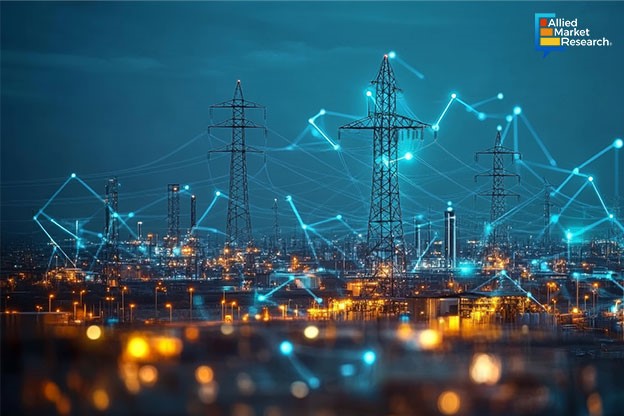How New Technologies Are Improving Electrical Grids

3 Apr
2025
Highlights:
- Introduction
- Enhancing Grid Efficiency with Advanced Materials
- Joint Initiatives for Grid Modernization
Electrical grids are changing to meet growing energy demands. New technology is helping make grids stronger, more efficient, and better at using renewable energy. Many power lines and transformers are old and need upgrades. New solutions like artificial intelligence, battery storage, and smart sensors are helping improve how electricity is delivered.
Making Power Lines Work Better with Dynamic Line Ratings
Many power lines do not carry as much electricity as they could because they follow fixed limits. Dynamic Line Ratings (DLR) allow power lines to carry more electricity by adjusting these limits based on real-time weather conditions. When the wind is strong or temperatures are lower, the lines can handle electricity more safely. Some companies are already using DLR to send more power through existing lines, avoiding costly infrastructure upgrades.
Using Smart Sensors to Prevent Power Failures
Transformers play an important role in delivering electricity. If they break down, large areas can lose power. New smart sensors and AI programs can now predict when transformers might fail. These systems monitor temperature, pressure, and other factors, helping companies repair problems before they cause outages. Early repairs can save money and prevent power disruptions. The electrical grid industry accounted for $251.9 billion in 2023 and is predicted to gather a revenue of $413.1 billion by 2033, citing a CAGR of 5.1% during 2024-2033.
Storing Extra Electricity with Batteries
Renewable energy, like solar and wind power, does not always produce electricity when needed. Batteries help store extra energy for later use. Many companies are now offering battery storage systems to homeowners and businesses. These batteries allow people to save energy when it is cheap and use it when demand is high. Some battery systems even allow homeowners to sell extra electricity back to the grid.
Using Advanced Materials to Make Grids More Efficient
New materials are improving how electricity is transmitted. Traditional power lines use copper, but copper is heavy and expensive. Some companies are developing lightweight materials that conduct electricity better than copper. These materials help reduce energy loss, which means more power reaches homes and businesses. Scientists are also exploring coatings that make power lines last longer by protecting them from weather damage. If power lines can last longer without needing replacement, it will make electricity cheaper in the long run. These advanced materials also help reduce energy waste, making grids more sustainable.
AI and Data Forecasting for Better Power Management
AI is helping electricity providers predict how much power people will use at different times. By analyzing past data, AI programs can estimate when demand will be high and when it will be low. This helps providers balance supply and demand, avoiding power shortages or excess energy waste. Some AI models also help companies integrate solar and wind power more efficiently.
Collaborative Efforts to Modernize Grids
Recognizing the complexities of modern grid challenges, collaborations between technology companies and utilities are becoming more prevalent. Nvidia, for instance, has partnered with the Electric Power Research Institute (EPRI) to develop AI models aimed at optimizing grid operations and forecasting demand surges. This initiative, known as the Open Power AI Consortium, includes participants like Microsoft and Oracle, and focuses on creating open-source AI solutions for real-world power challenges.
Companies Working Together to Improve Electricity Delivery
The proliferation of AI technologies has led to increased energy consumption in data centers. Nvidia's next-generation AI chips are expected to significantly raise power consumption, posing challenges for electricity production. To address this, Nvidia and Schneider Electric are collaborating to create "digital twins" of data centers. These virtual replicas allow for improved design and operation, enhancing energy efficiency and reducing the environmental footprint of data centers.
Managing the Energy Needs of AI Data Centers
AI data centers use large amounts of electricity. As AI has become more common, energy use is increasing. Nvidia and Schneider Electric are working on a solution by creating "digital twins" of data centers. These digital models help companies design energy-efficient data centers, reducing waste and improving power use.
The Future of Smart Grids
Electrical grids are becoming smarter with the help of AI, sensors, better materials, and battery storage. These technologies are making electricity delivery more reliable and cost-effective. With the growing demand for energy, more changes are expected to come, but the innovations happening today are already making a big difference.
Reach out to our experts to learn more about the evolving landscape of the electrical grid industry!

Koyel Ghosh
Author’s Bio- Koyel Ghosh is a blogger with a strong passion and enjoys writing in miscellaneous domains, as she believes it lets her explore a wide variety of niches. She has an innate interest in creativity and enjoys experimenting with different writing styles. A writer who never stops imagining, she has been serving the corporate industry for the last five years.
Avenue: Entire Library membership of Allied Market Research Reports at your disposal
- Avenue is an innovative subscription-based online report database.
- Avail an online access to the entire library of syndicated reports on more than 2,000 niche industries and company profiles on more than 12,000 firms across 11 domains.
- A cost-effective model tailored for entrepreneurs, investors, and students & researchers at universities.
- Request customizations, suggest new reports, and avail analyst support as per your requirements.
- Get an access to the library of reports at any time from any device and anywhere.
Related Post
-
How are Submarine Cables Transforming Global Connectivity with Enhanced User Experience?
-
Endoscopy Procedures: Transformations in Techniques and Applications
-
AI-Powered Video Analytics: How the Product Actually Works for enterprises
-
Painting Robots: Transforming Precision Coating and Creative Applications
-
Innovations in Pharmacovigilance Systems Advancing Patient Safety
-
Understanding Edge Security: Keeping Data Safe Near the Source
-
Exploring the Use and Advancements of 3D Laser Scanners in Professional Applications
-
Reinforcing Industrial Controls with Smarter Tools and Training








